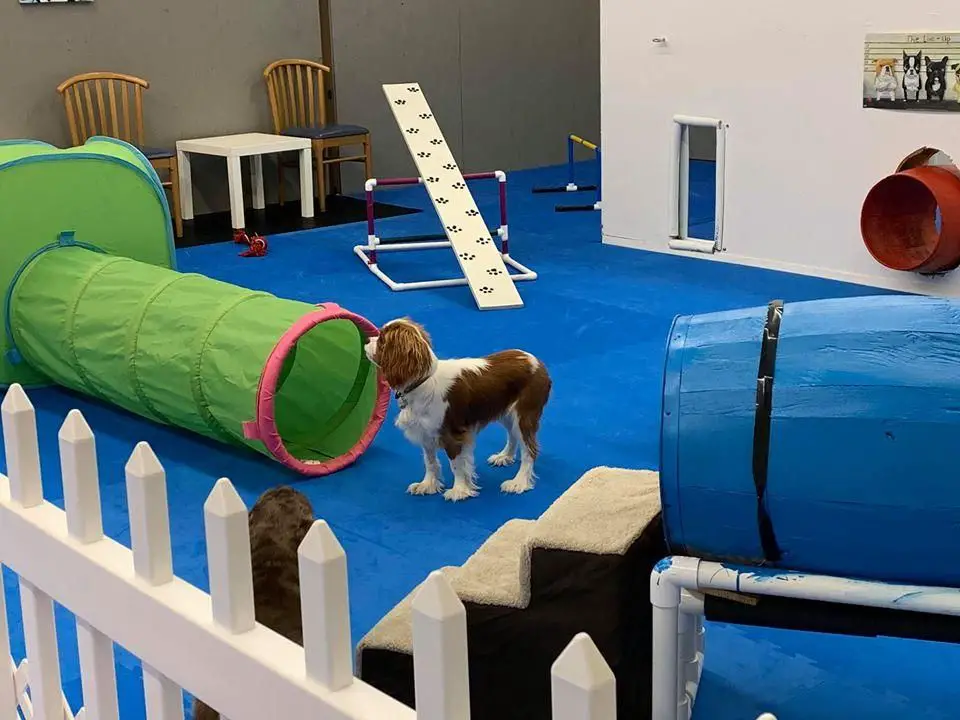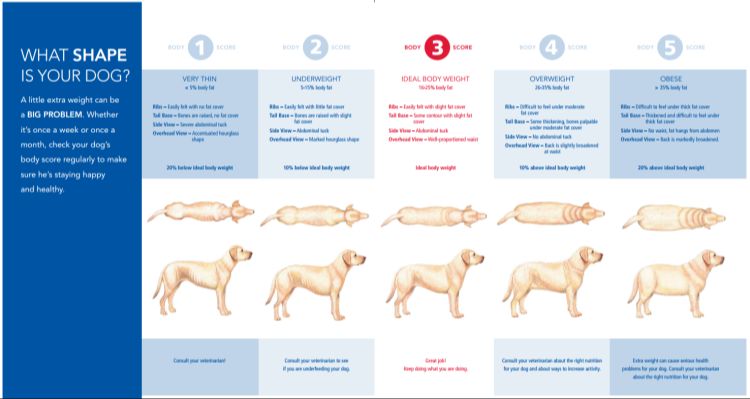Is 30 Minutes at the Dog Park Enough Exercise for Your Pup?
If you’re a dog owner who takes your furry friend to the dog park, you’ve probably wondered – is 30 minutes at the dog park really enough exercise for my pup? While every dog is different, most experts agree that typically 30 minutes of off-leash play at the park is not sufficient on its own to meet your dog’s daily exercise needs.
In this article, we’ll take a deep dive into how much exercise dogs really require, the benefits and potential downsides of limiting time at the dog park, tips for making the most of your park visits, and ideas for supplementing with other forms of exercise.
Recommended Exercise Times
Experts recommend that the average adult dog should get 30-60 minutes of exercise per day. However, the optimal amount varies based on factors like age, breed, and health status.
Puppies under 6 months may only need 5-10 minutes of walks and active play per month of age. For example, a 3 month old puppy needs about 15-30 minutes of exercise daily. Puppies have lower energy levels but need socialization and training during walks.
Adult dogs between 1-7 years old typically require 30-60 minutes of exercise daily. Energetic breeds like Labradors and Golden Retrievers need 45-60 minutes. Lower energy breeds like Basset Hounds or Pugs may only need closer to 30 minutes. Breaking exercise into two or more daily sessions is ideal.
Senior dogs over age 7 start to slow down and may only need 20-30 minutes of exercise per day. Their needs decline with age and health conditions like arthritis. Short, low impact walks are best suited for the senior set.
In general, high energy working breeds require more exercise while low energy companion breeds require less. Herding breeds like Collies and Shepherds need upwards of 60-90 minutes of vigorous activity per day. Sighthounds like Greyhounds run fast but tire quickly with sprints of exercise. Consult your veterinarian for breed-specific guidelines.
Benefits of Exercise

Exercise provides many important benefits for dogs’ physical health and mental well-being. Physically, regular exercise helps strengthen muscles, improve cardiovascular health, and maintain a healthy weight. Mentally, exercise provides much-needed stimulation and prevents boredom by satisfying dogs’ natural instincts to run, play, and explore. Socialization is another big benefit of exercise for dogs. Interacting with other dogs and people at the park allows them to form relationships, learn proper social skills, and get the mental enrichment that comes from being around others.
Potential Downsides of 30 Minute Limit
While 30 minutes of exercise at the dog park sounds reasonable for many dogs, it may not actually meet the needs of more high energy breeds like border collies, jack russell terriers, dalmations, and others. These active dogs often require 60 minutes to 120 minutes of vigorous exercise per day. Without adequate activity, they are at higher risk for weight gain, joint problems like hip dysplasia, and behavior issues like obsessive barking and destructive chewing habits.
Dogs were bred for specific purposes over hundreds of years. Herding breeds like border collies are meant to run and work all day, hunting dogs like labradors need retrieving games and long walks, and terriers were bred to chase small vermin over long distances. Their instincts don’t simply disappear when they become pets. 30 minutes of relaxed play at a park is unlikely to satisfy these innate drives.
Additionally, young puppies need multiple structured exercise sessions per day to build proper joint, muscle, and behavioral development. An overly restrictive time limit at parks could lead owners to under-exercise adolescent dogs at this crucial growth stage. The resulting obesity and joint issues could last a lifetime.
While every dog has individual exercise requirements, it’s clear that an arbitrary 30 minute limit risks under-stimulating many active breeds, both physically and mentally. Their pent-up energy manifests in problem behaviors at home. More flexible park guidelines could improve outcomes for dogs, owners and neighborhoods.
Making the Most of Park Time

When bringing your dog to the park, it’s important to encourage vigorous play and activity during the visit. Simply standing around or walking leisurely may not provide enough exercise. Try engaging your dog in active games of chase and fetch to get their heart rate up. Interacting and playing with other dogs can also encourage more physical activity through wrestling, running, and jumping.
Some tips for making the most out of your park time:
- Bring toys to play fetch and encourage chasing games.
- Run around with your dog and get them following you.
- Introduce your dog to other friendly pups for playtime.
- Bring treats to use as rewards for active play.
- Rotate resting and playtime rather than extended inactivity.
- Go during busier times when more dogs are present.
- Visit larger parks that allow room to run and move.
Focusing on vigorous play while visiting the park will help your dog get mental and physical stimulation beyond just being outdoors. The time spent will be more beneficial if movement and activity are prioritized during the visit. Aim for active engagement rather than passive standing or lounging. With your participation and encouragement, 30 minutes at the park can provide a good exercise outlet for your pup.
Supplementing with Other Exercise

While the dog park is a great place for dogs to run around and play, 30 minutes may not provide enough exercise for some high energy dogs. There are many ways to supplement the dog park visits with additional exercise at home.
Going on walks is one of the easiest ways to give your dog more exercise. Aim for at least one 30-60 minute walk per day in addition to the park visit. If possible, walk to and from the park to add more exercise time. Dogs love exploring new neighborhoods and sniffing new smells during walks.
Indoor playtime is another great way to supplement park exercise, especially when the weather is bad. Set aside 10-15 minutes, 2-3 times per day for active indoor play. Fetch, tug of war, and chasing toys get your dog moving and build bond through play. Just be sure to pet-proof the area first!
Mental exercise is just as important as physical exercise for dogs. Work their brains by doing short 5-10 minute training or trick sessions throughout the day. Feed meals through food puzzles or snuffle mats. Provide chew toys or frozen Kongs to keep them busy. A mentally tired dog is a happy, calm dog.
Signs Your Dog Needs More Exercise
While 30 minutes of running and play at the dog park is great for many canines, some higher energy dogs may start exhibiting signs they need more activity throughout the day. Here are some common indicators your pup requires additional exercise beyond a half hour at the park:
High Energy and Restlessness: If your dog paces around the house, follows you from room to room, or seems unable to settle down and relax even after returning from the park, they likely have pent up energy still needing an outlet. High energy dogs often need upwards of 60-90 minutes of vigorous exercise per day.
Destructive Behaviors: Chewing, digging, barking and other destructive behaviors can sometimes signal a dog is bored and needs more stimulation. Providing appropriate chew toys and puzzles along with increasing exercise can help curb these habits.
Excessive Barking: Dogs left alone for long periods with inadequate exercise may bark excessively due to boredom and frustration. Ensuring your canine companion gets enough activity can help reduce excessive vocalizations.
Weight Gain: If your dog starts to pack on extra pounds, it’s a clue they need more calorie burning exercise. Gradually increase their daily walks, play time and other active pursuits to get them back into shape.
Alternatives to Dog Parks
While dog parks provide an easy way for canines to get exercise and socialization, they aren’t the only option. Here are some other great ways to exercise your dog:
Hiking, Running, and Swimming
Take your dog on hikes through nature trails, go for a jog together, or let them swim in a lake or pool. These activities allow your dog to really burn energy while exploring new environments.
Doggy Daycare
Doggy daycares offer a safe, engaging place for dogs to play and interact all day long. The staff will monitor your dog and make sure they get plenty of exercise and socialization.
Interactive Toys
There are many interactive toys on the market designed to keep your dog physically and mentally stimulated. Food puzzle toys that require manipulation to access kibble are great for burning energy indoors.
Final Tips

When it comes to exercise, it’s important to know your dog’s unique needs. Some dogs may be satisfied with a 30 minute trip to the dog park, while others require much more physical and mental stimulation. Pay attention to your dog’s energy levels and behavior to determine if they need more exercise.
Try to mix up your dog’s activities and locations as much as possible. Going to the same dog park day after day can become repetitive. Take your dog on walks through new neighborhoods, hike different trails, or visit new dog-friendly establishments to keep things interesting.
Incorporate mental stimulation into your dog’s routine too. Activities like obedience training, puzzle toys, nose work games, and trick training all provide mental enrichment. A tired dog is often one that has had both physical and mental exercise.
Every dog has unique needs when it comes to exercise. Paying attention to your dog’s behavior and energy levels, mixing up activities, and providing both physical and mental stimulation will help ensure your dog gets the exercise they need to stay happy and healthy.
Conclusion
In summary, the amount of exercise a dog needs varies based on breed, age, and individual energy levels. While 30 minutes per day at a dog park may be sufficient for some more easygoing canines, higher energy dogs may require more time and activity to stay healthy and happy.
It’s important to monitor your dog’s behavior for signs they need additional exercise beyond a half hour visit to the local dog run. Pay attention to symptoms like hyperactivity, destructive chewing, barking, aggression, or other stress-related behaviors. If you notice these behaviors after returning from the park, it’s a clue your pup needs more physical and mental stimulation.
Every dog is unique, so be sure to cater exercise to your individual pooch. Combine dog park trips with other activities like walks, fetch, training sessions, puzzle toys, and more to keep them active and engaged. With the right mix of exercise matched to your dog’s needs, 30 minutes at the park can be enough for daily exercise.